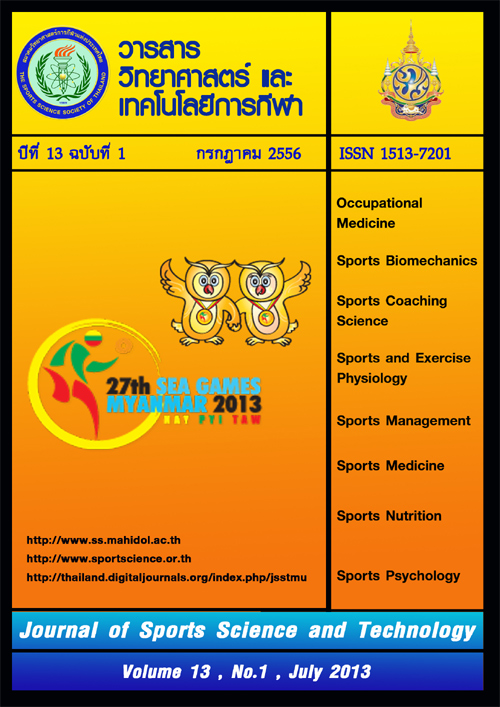EFFECT OF THAI DANCING EXERCISE ON DYNAMIC BALANCE IN AGING
Keywords:
Balance, Aerobic exercise, Thai DancingAbstract
The elderly often have degenerative changes in their nervous and musculoskeletal systems, such as a decrease in number of nerve fibers and muscle fibers, resulting in slow nerve conduction, reduced muscle strength, loss of balance, and difficult movement. Subsequently, older adults easily fall during locomotion or transitional activities. Exercise can prevent these problems in older adults. Thai dancing induces movement of the whole body from head to foot. Thus, the aerobic exercise of Thai dancing may improve balance in the elderly. The purpose of this study was to investigate the effect of the aerobic exercise of Thai dancing on balance in the elderly. Twenty-five women aged over 60 years participated in this study. Data were collected over a 9 week period at 4, 8, and 9 weeks after exercise training, which consisted of moderate intensity exercise 30 minutes at a time and 3 times per week. Berg balance test measurements were taken.
The results showed that time up and go score significantly decreased (p<0.05) after 8 and 9 weeks’ exercise training. In addition, the results also showed that there was no significant difference (p>0.05) on increasing balance between 8 and 9 weeks of aerobic exercise. In conclusion, the effect of the aerobic exercise of Thai dancing for 8 weeks could improve dynamic balance in the elderly.
(Journal of Sports Science and Technology 2013;13(1): 127 – 136 )






